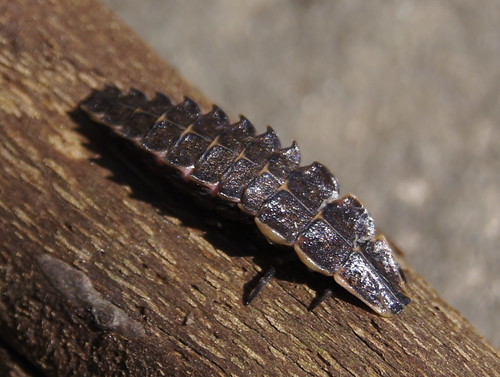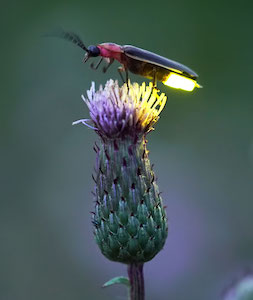Friend or Foe
Keep The Fireflies Burning
By Ray Novitske, Fairfax Master Gardener
 As a child, who doesn’t remember being fascinated by the magical flickering lights of the fireflies in the early summer evening? We learned that these strange docile creatures did not buzz, sting or spread diseases, and were not poisonous. They just flashed like beacons requiring our attention. We always called them lightning bugs and always wondered what caused them to flash and why. We caught them and placed them in jars in our bedrooms. But are they gardeners’ foes?
As a child, who doesn’t remember being fascinated by the magical flickering lights of the fireflies in the early summer evening? We learned that these strange docile creatures did not buzz, sting or spread diseases, and were not poisonous. They just flashed like beacons requiring our attention. We always called them lightning bugs and always wondered what caused them to flash and why. We caught them and placed them in jars in our bedrooms. But are they gardeners’ foes?
Fireflies are neither flies nor bugs. They are beetles — the largest of all the insect orders. There are approximately 200 species of fireflies from 23 genera in North America. Most fireflies are an inch or less in length and have soft, flexible forewings instead of the characteristic hard wings that most beetles possess. This anatomical difference is another reason why fireflies may not register as a beetle in most peoples’ minds.
Fireflies (in our area Photinus pyralis is most common species) begin as eggs laid in damp soil. Once they hatch, the larvae start life as nocturnal carnivores lurking on the soil surface or under debris. Appearing reptilian, they are active at night eating other arthropod larvae like slugs, earthworms, snails and other soil-dwelling critters like cutworms and other garden pests. So, they are an effective natural pest control.

Firefly larva
One reason that fireflies light up is to attract a mate. Males and females of the same species will flash each other — as a signal. Each firefly species has its own particular pattern. For example, the fireflies of one species will fly around in the night sky and dive steeply just as the flash begins and turn upward to make a distinctive J-shaped pattern of light. Female fireflies hang out on a tree branch or in the grass while the males fly around showing off their best flashes. When a female recognizes the flash from a male of the same species, she will answer with her best flash.
Another reason that fireflies twinkle is to avoid predators. Fireflies are filled with nasty-tasting chemicals called lucibufagens. If a predator gets a mouthful, it quickly learns to associate the glow with this bad taste. This keeps predators from repeating the same mistake again and they stay away from flashing insects.

Photinus pyralis firefly
There are ways you can create an inviting habitat for these beneficial creatures in their larvae and adult stages. You may see more fireflies in wooded areas than in open fields, and in some backyards but not in others. There is a reason for this. Females prefer to lay their eggs in moist, mossy areas and prefer wetlands. Larvae spend up to two years in the moist underground, so you should leave some areas of leaf litter and woody debris. Let your grass grow taller to help preserve soil moisture.
Fireflies use bioluminescence for mating and communication, so help reduce bright artificial lights that can interfere with their ability to find each other. Studies indicate that fireflies are decreasing in number, and one theory is that artificial light may be disrupting their courtship. Experiments found that LED floodlights are most disruptive, probably because of the spectrum of light. Experiments also found that excessive light does not interfere with males’ flashing but does with females seeing the flashing. This is probably because artificial light making males difficult to spot in the night.
Because juveniles spend time living underground, they come in contact with insecticides spread over wide areas on lawns. Don’t use weed & feed chemicals indiscriminately or similar products that contain 2,4-D, which has been shown to be toxic to earthworms and beetles, like ladybugs. Avoid broad-spectrum insecticides like malathion and diazinon that kill all insects they contact. Instead, use organic or less-toxic products in specific areas to address specific problems.
Fireflies are important because they help to control insect pests, so they are gardeners’ friends. Let’s help maintain their health by providing an appropriate environment for them and preserve their magical twinkling for our children to appreciate.
References
• Night Lights, UVA Today, University of Virginia, August 2018
• Fireflies Aren’t Flies: Biology and Benefits of Fireflies, University of Minnesota Extension, Rice County
Extension Office
• How A Firefly’s Tail Makes Light, Learn Genetics, University of Utah
• Insect of the Week: How To Make Your Yard More Firefly-Friendly, Princeton University Press Blog,
May 2018
• The Glow, Connecticut College